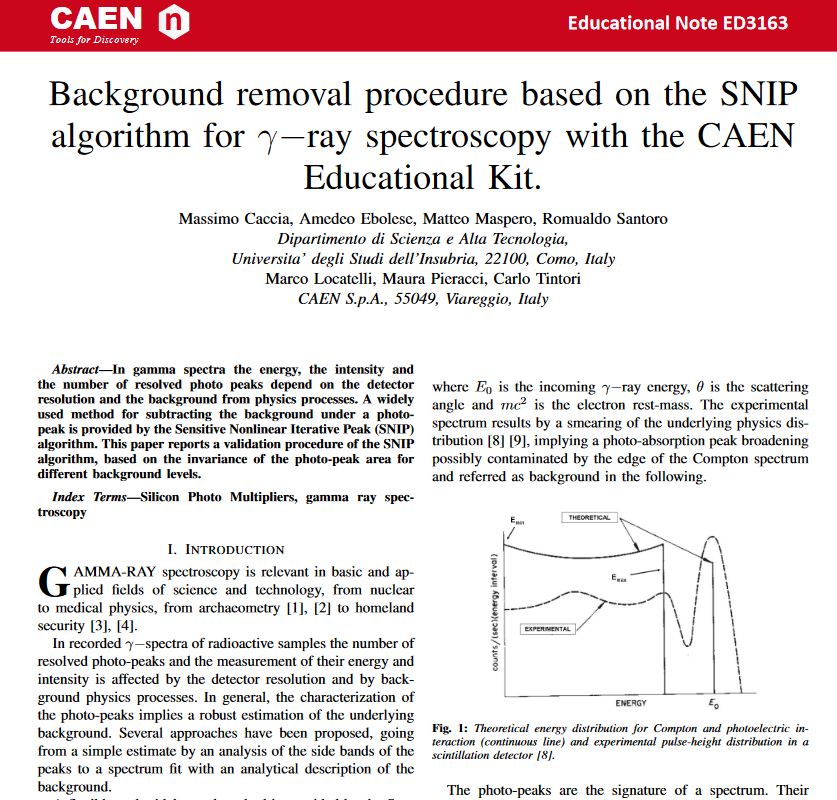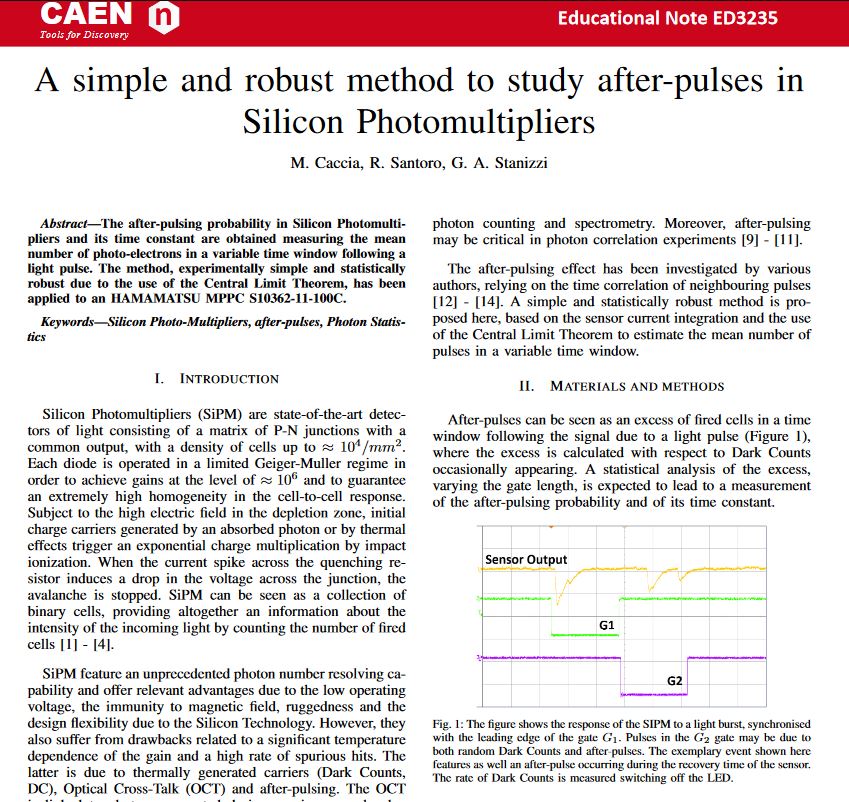Background removal procedure based on the SNIP algorithm for γ-ray spectroscopy with the CAEN Educational Kit
In gamma spectra the energy, the intensity and the number of resolved photo peaks depend on the detector resolution and the background from physics processes. A widely used method for subtracting the background under a photopeak is provided by the Sensitive Nonlinear Iterative Peak (SNIP) algorithm. This paper reports a validation procedure of the SNIP algorithm, based on the invariance of the photo-peak area for different background levels.





